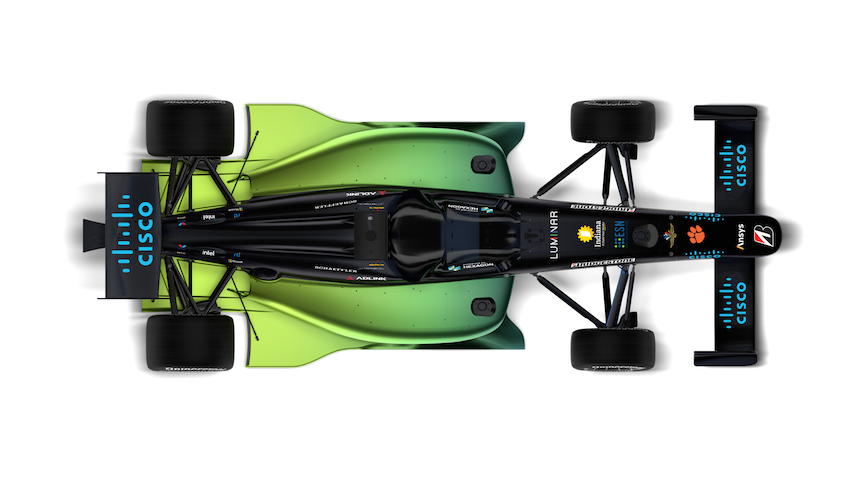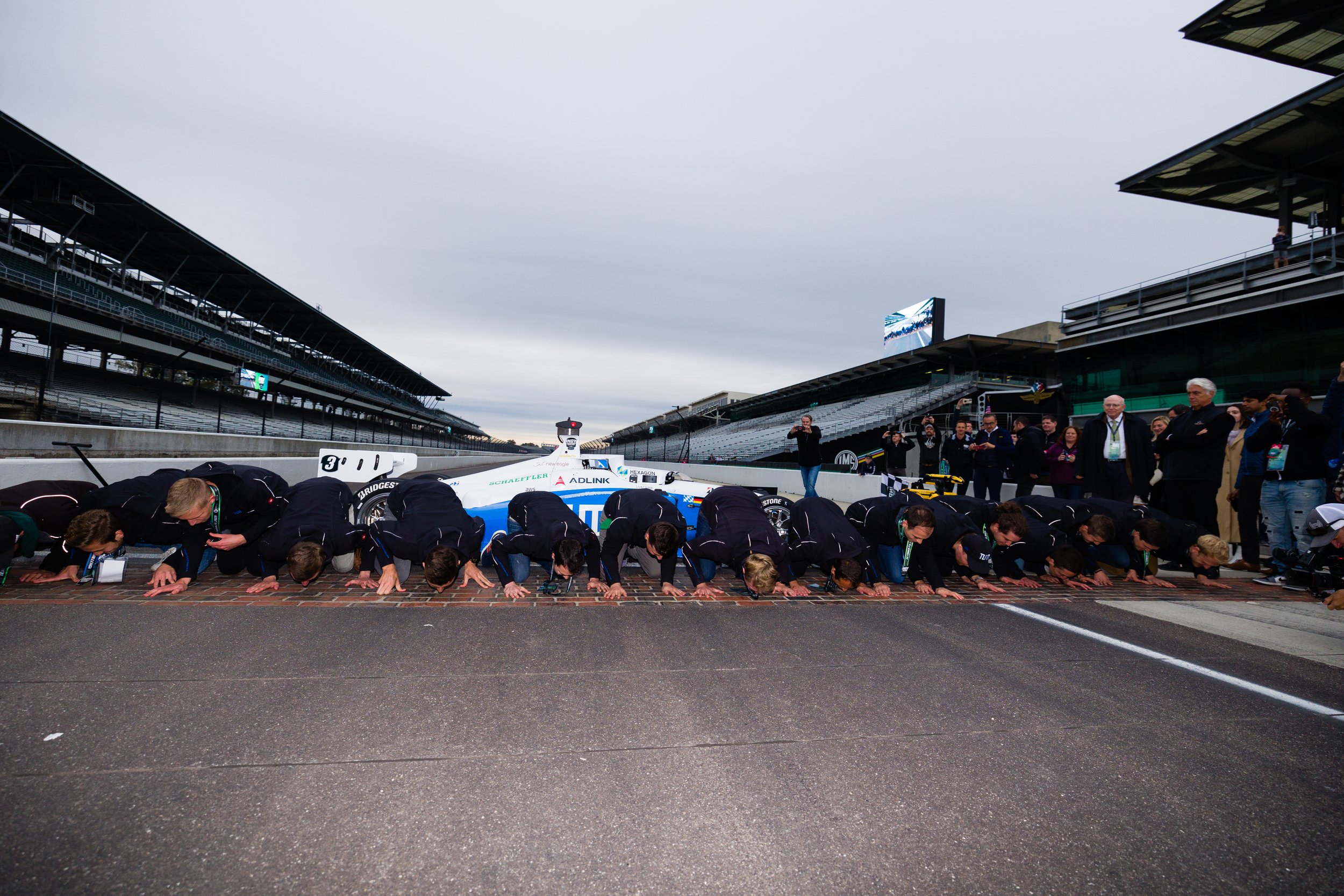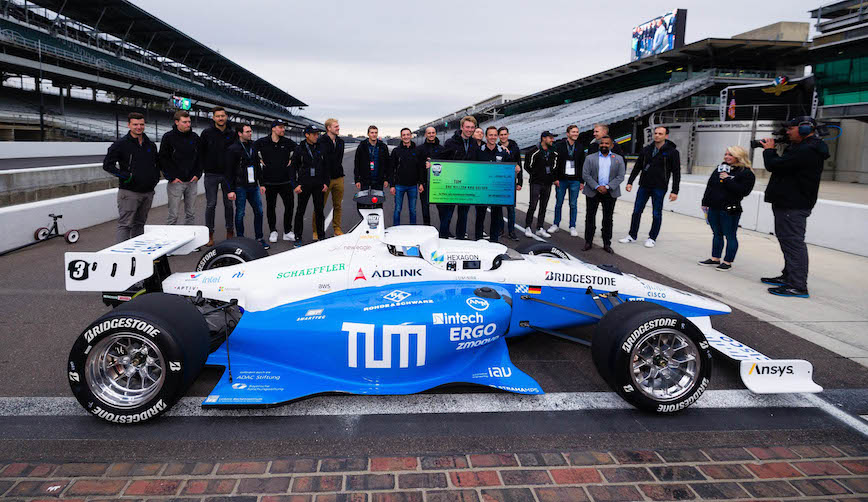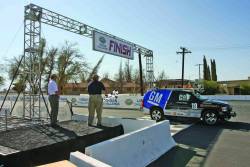“Ladies and gentlemen, start your software and crank your engines.”
Thus came the starter’s call from Indiana Governor Eric J. Holcomb at the Indy Autonomous Challenge Powered by Cisco (IAC), the first autonomous racecar competition at the Indianapolis Motor Speedway (IMS), held on Saturday, October 23. Nine teams from 21 universities competed with identical hyper-spec’d and hyper-sensored driverless Dallara AV-21 racecars; only the software driving them differed from vehicle to vehicle.

TUM Autonomous Motorsport from the Technische Universität München (TUM, Technical University of Munich) won the race with the fastest 2-lap average speed, avoiding obstacles on the way, of 135.944 mph around the legendary Brickyard, the Indianapolis Motor Speedway Oval. TUM takes home the $1 million prize, part of $1.5 million in total prizes awarded by the months-long competition.
Organized by Energy Systems Network and the Indianapolis Motor Speedway, the primary goal of the IAC is to advance technology that can speed the commercialization of fully autonomous vehicles and deployments of advanced driver-assistance systems (ADAS). These enhancements will lead to increased safety and performance in motorsports as well as all modes of commercial transportation. In addition, the competition serves as a platform for students to excel in Science, Technology, Engineering and Math (STEM) and inspire the next generation of innovators.
Boston Dynamics’ agile mobile robot Spot waved the traditional green, white and checkered flags.
“Participating in the Indy Autonomous Challenge allowed our team to advance autonomous driving technology and being able to take first place after two years of hard work acknowledges that we had an outstanding team,” said Alex Wischnewski, team leader of TUM Autonomous Motorsport. “Our next goal is to win a high-speed autonomous head-to-head race.”
“The IAC would not be possible without the generous support of Lilly Endowment Inc. and the Indiana Economic Development Corporation, which have been committed partners since the beginning,” said Paul Mitchell. “The prize money won by TUM Autonomous Motorsport will go to the Technische Universität München (Technical University of Munich, Germany), to support the university’s efforts to further autonomous technology research and development. We know that the achievements of our IAC teams, alongside some of the best companies in the world, will certainly lead to the acceleration of Indiana’s AI and automation industries well into the future.”
In addition to thousands of attendees at the IMS, and more than 20,000 viewers on the AWS livestream, the IAC hosted 350 high school STEM students, the next generation of innovators, representing more than 50 urban, rural and suburban school districts across Indiana.
For a free webinar detailing technical aspects of the racecars, see “Unlocking High Speed to Enable Autonomous Safety.” Three expert engineers closely involved with the race afford their insights:
• a race overview, chronicling the 10-month journey and the challenges encountered along the way;
• how GNSS provides absolute position and the backbone for the high-speed sensor fusion aboard the 10 competing Dallara AV-21 racecars;
• how LiDAR is used to provide relative localization and movement data.
A further technical story discussing the software and sensor fusion algorithms can be read in NovAtel’s Velocity magazine, “Algorithms Race to Save Lives.”







